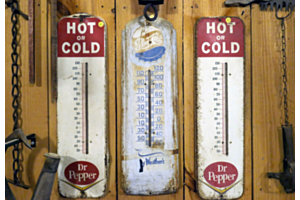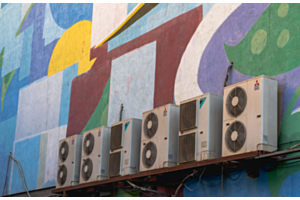Monthly Archives: January 2021
-
January 25, 2021
Your current heating or cooling system (or perhaps it’s even both) has gotten far too expensive. Not only are you paying a lot in energy bills because your HVAC just isn’t energy-efficient, but the units break down often too. The repairs are getting costlier since the unit’s parts have become harder to come by. Even maintenance isn’t cheap.
It sounds like you could benefit from a new heating and cooling solution. One option you’re looking at is a variable refrigerant flow or VRF system. You’ve heard some good things, but you’re still undecided. Are VRF systems all that reliable?
Most definitely, and they’re certainly more reliable than your current tired air conditioner or heater. Here are some ways that you can rely on a VRF system going forward.
Temperature Control
Your HVAC units lack precise temperature control. Even if you can tip the thermostat
-
January 18, 2021
You’re familiar with standard heating and air conditioning units. Through this blog, you’ve become acquainted with ductless mini split systems as well. A coworker of yours recently told you about a VRF system they got installed in their home, which has you curious. What is a VRF system?
In today’s post, we’ll tell you all that and more. Think of this article as your VRF systems 101!
What Is a VRF System?
A VRF system is short for a Variable Refrigerant Flow system. You may also hear of a VRF system being called a Variable Refrigerant Volume or VRV system. Created in 1982 by a company called Daikin Industries Ltd., VRF systems work in a way akin to ductless VRF systems work much like multi zone systems, because it can handle several indoor units with one outdoor unit. Mini Split Systems are always 1 to 1 condenser and indoor unit. The main difference
-
January 11, 2021
When you first got your ductless mini split system installed, everything worked like a dream. Then suddenly you started having issues with the AC. Now it’s cooling sporadically or not reaching the temperature you set. What is going on and what can you do about it?
Here are some troubleshooting tips for your mini split AC.
Do a Wiring Check
If the wiring was faulty from the get-go or has become that way over the months or years since installation, then the mini split AC might not be getting the signals to adjust to the requested temperature. Other signs that you have a wiring issue are the indoor and outdoor unit regularly fall out of communication with one another and heating is just as troublesome as cooling.
We wouldn’t recommend you go tinkering with the wiring components of your ductless mini split AC yourself. Call your technician and let them
-
January 04, 2021
Today, energy efficiency is a major factor that can impact whether we buy a heating or cooling unit as much as–if not more so–the price of said unit. If your current air conditioner or heater is an energy hog, you might consider a VRF split system. Is VRF really all that energy efficient?
Keep reading to find out!
What Is VRF and How Does It Work?
First, let’s begin with a quick recap of what a VRF split system is. Short for variable refrigerant flow, VRF systems rely on refrigerant that travels through a condenser unit or several. As the refrigerant moves, it’s cooled or heated according to the needs of a room.
The more complex three-piped VRF systems can act as a heater and cooler all in one. Even better is that rather than heat parts of a home or building at one time and then cool them later, a three-piped VRF system can handle both heating and cooling at the same time.
That’s not the case with a two-piped VRF split system, which






